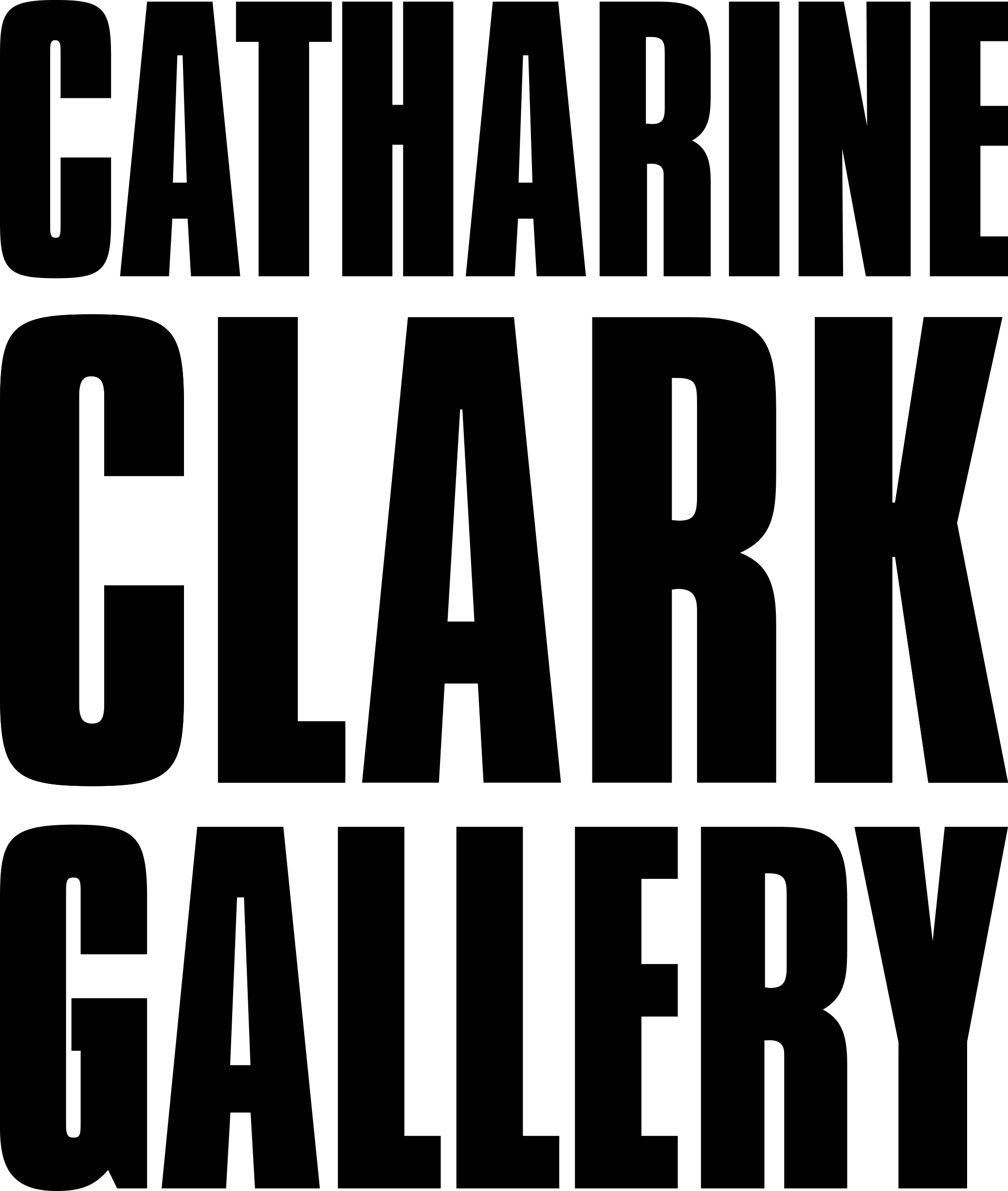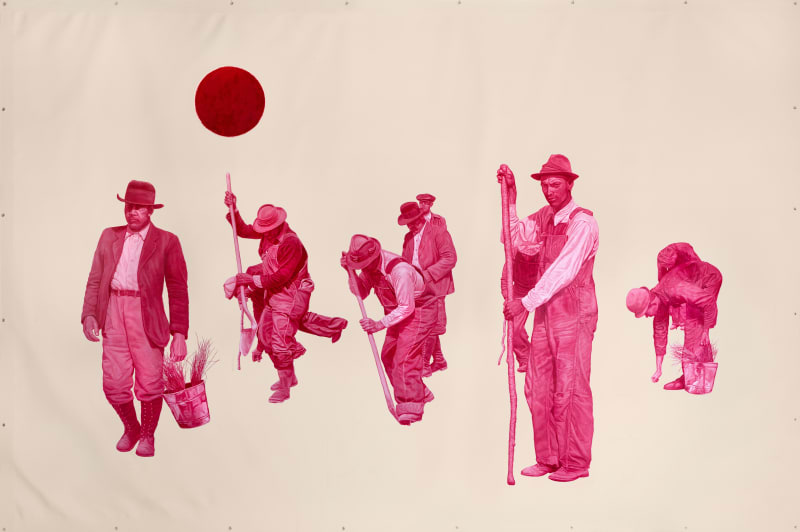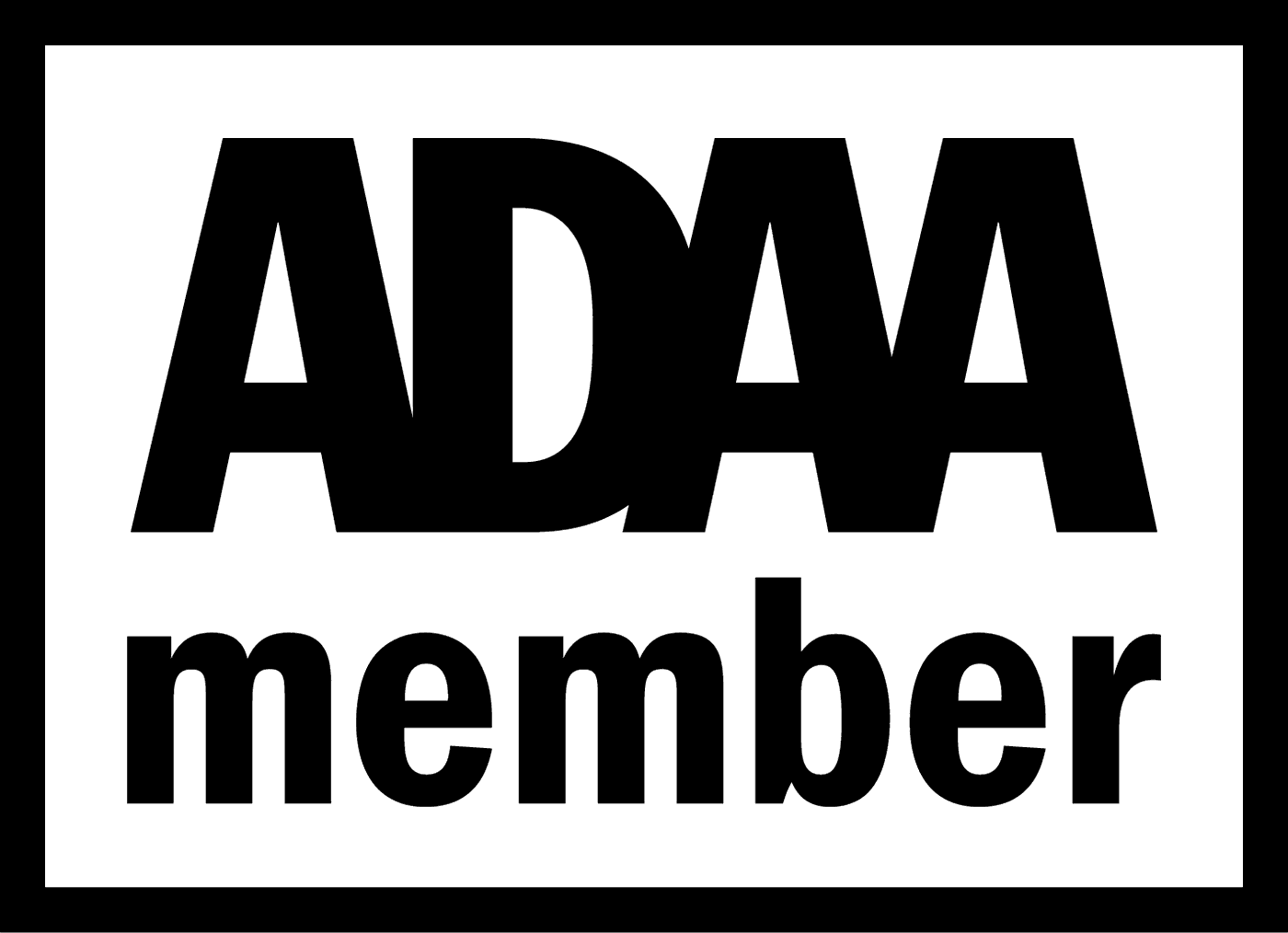Joel Daniel Phillips: A Compelling Narrative
South Gallery
Gil Batle: Almost Sanctuary
North Gallery
Nanci Amaka: Cleanse / Window
Media Room
On view July 26 – September 27, 2025
Opening reception: Saturday, July 26 from 3 – 5pm; remarks at 3:45pm
San Francisco – Catharine Clark Gallery is pleased to announce its Summer 2025 program, featuring three dynamic solo exhibitions: Joel Daniel Phillips’s A Compelling Narrative (South Gallery), Gil Batle’s Almost Sanctuary (North Gallery), and Nanci Amaka’s Cleanse / Window (Media Room). These exhibitions, presented in conversation with one another, reflect on artmaking as a form of record-keeping and a means of revealing unseen histories. All three exhibitions will be on view from July 26 to September 27, 2025.
Joel Daniel Phillips's exhibition, A Compelling Narrative, continues his research into the Library of Congress’s photographic archives from the 1930s, created during the New Deal by the Farm Security Administration (FSA). His acclaimed series, “Killing the Negative,” responds to the lesser-known process by which FSA photographs were selected for publication. Through a deep dive into the archive, Phillips discovered who made these choices and what happened to the negatives of photographs deemed unworthy of publication.
The head of the FSA during this era was Roy Emerson Stryker (b. November 5, 1893 – d. September 27, 1975). Stryker would “kill” images he felt were unsuitable for publication by punching a hole in the original negative. The current political debates about race, class, labor, compensation, land ownership, socioeconomic stratification, and ecological protection deeply resonate with issues of that era, many of which are embedded in the original censored FSA photographs.
This discovery of a “killed negative” led Phillips and poet Quraysh Ali Lansana into a multi-year collaborative project and book: Killing the Negative: A Conversation in Art & Verse. The project serves as an ekphrastic rejoinder to FSA Director Stryker’s once little-known practice of destroying photographs he found unappealing. As an ongoing collaboration, “Killing the Negative” addresses the gaps in the narrative left by censorship, introducing new images and words into the spaces created by Stryker’s hole punch. Within the project, Stryker’s destructive editing process serves as a broader commentary on truth and the accuracy of the historical record, highlighting the flaws in our reliance on this record and emphasizing the power a single individual had in shaping the collective understanding of an entire nation. The writers contribute interventions of text, sound, and breath, giving voice to the subjects of these damaged negatives. In each collaboration, poet and artist work together to fill the void left by heavy-handed government practices, creating an entirely new conversation about power, representation, and the shaping of America’s history.
Phillips notes, “The American government’s social safety net—much of which is being dismantled today—was largely built around the New Deal, which the original FSA photographs were all created to sell to the American people. In this moment, I've found myself seeing the hole-punch become both a metaphor for the way political administrations are carving holes through the heart of America, as well as a potent symbol questioning how we create and tell our stories.”
He continues, “The FSA images were originally shot to convince the American public that a collective, government response to the Great Depression was both necessary and effective. Now, we are being told the opposite: that the government shouldn't be involved in any of the myriad programs that do everything from helping keep our elders from homelessness to educating our children. My interest in the floral printed feed and flour sacks—which recur throughout these historic images and subsequently in this series of paintings—came out of this debate. One of the most common 'feel-good' stories I've heard from the Great Depression tells how flour and feed companies saw poor folks reusing their fabric sacks to make clothing and started printing contemporary floral patterns on the sacks to make this reuse more fun. It's a heartwarming story, but also a naive one, as these companies printed fabric grain sacks not out of benevolence, but to sell more product.”
Phillips concludes, “I’ve recently found myself wondering if there are any images that could act today the way the FSA photographs did during the Great Depression and bring us together to help one another. Against this sometimes hopeless feeling backdrop, Stryker's hole-punch asks us even more starkly to examine the power and structures behind our narratives.”
Gil Batle’s Almost Sanctuary is the artist’s debut exhibition in the gallery’s main space, following several presentations in EXiT, the gallery’s art book store. Born in 1962 in San Francisco to Filipino parents, Batle spent 20 years in and out of five different California prisons for fraud and forgery. He now lives on a small island in the Philippines. Batle’s self-taught drawing ability evolved behind bars into sophisticated and clandestine tattooing skills that protected him from murderous gang violence in prisons such as San Quentin, Chuckawalla, and Jamestown—the “Gladiator School” as it’s known to the unfortunate cognoscenti. In racially segregated cell blocks, where Bloods, Crips, and Aryan Brotherhood gang members rule with intimidation and threat, Batle’s facility for drawing was considered magic by the murderers, drug dealers, and armed robbers whose stories he now recounts in minutely carved detail on fragile ostrich eggshells, clay, and paper.
Batle writes, “My carved ostrich eggs depict surreal visions of memories from my struggles with incarceration and/or my struggle for freedom. There are many symbols of shanks, chains, barbed wire, locks, birds, and inmates linked together in chains surrounding panels of dreams, events I recall, or the inmates I’ve known.”
“I actually have to go back (mentally) to prison to capture that feel of being inside that place,” the artist states. “It’s a relief of gratitude when I look up from the egg and I’m reminded that I’m not in there anymore.” While articles about prison abuse appear weekly in the press, they are mere snapshots of the hard truth chronicled in Batle’s artwork. The violent men he knew, the sad mistakes that sometimes led to the incarceration of regular guys, the terrifying events he witnessed, and the bonds formed under the worst conditions all appear with precise detail within his artwork.
Batle’s exhibition also features hand-painted blue and white plates and glass trophies. Batle remarks that he noticed a Japanese Blue Willow porcelain plate in a small antique shop that depicted an old monk fishing by a river, encircled by fish scales on the rim. Batle recalls that the monk caught a fish on his line, and that the fish bore a startling resemblance to a prison shank. Batle writes, “I wanted to make a plate like this but didn’t know about the process of firing glazed ceramics. Nevertheless, I was obsessed with the idea of making a plate. I decided to render one in blue acrylic paint on an existing white ceramic plate; pretty soon, I began creating scenes that reflected on my incarceration and my struggle with freedom on the island where I now live. The compositions incorporate local island animals, oceans, jungles fused with characters of my past.”
Batle’s glass trophies, made of reassembled shattered whiskey bottles, reflect on Batle’s struggles with addiction. Batle writes that “during this struggle, there were times I would smash my whiskey bottle in a drunken stupor in anger and sadness. These glass trophies evolved from my struggles with addiction to my overcoming of it, the smashed whiskey bottles reimagined as victorious forms.” The glass trophies are also etched with similar scenes, figures, and images as those depicted in Batle’s ostrich eggs and hand-painted plates, and there’s a similar tension between the delicate forms of these sculptures and these resilient substrates – egg, ceramic, glass – that bear these stories. Across the three bodies of work, Batle powerful transforms these difficult experiences into a celebration of survival and creative process.
Nanci Amaka’s video work exists in the space between looking, seeing, and knowing. Her performances explore the concept of being a spiritual being living in the present moment while laden with memories and future imaginaries. She is interested in the limitations around awareness; in the psychological and philosophical nuances of visual language; in oral indigenous histories; and in ancestral knowledge inherited into our corporeal physiques.
Her series, Cleanse (2017 – ongoing), was performed on August 2nd, 2017, at Ward Warehouse in Honolulu, Hawaiʻi. It is the ritualistic cleaning, washing, and anointing of the aforementioned structure as a final act of nurture before its demolition. Amaka writes, “It is customary in many indigenous cultures—including my own Igbo culture—to wash and dress the body of the dead before they are buried. I lost my mother to violence as a young child. Sadly, her family did not get the chance to perform the final rites of washing her body before she was buried. Growing up, I was forbidden from speaking about her, and my father destroyed all photographs of her. Most times, it was as if she never existed. I subsequently dealt with the pain of losing her and the absolute silence around her by practicing forgetting.”
Cleanse was performed as an act of reparation for this lifelong sorrow at the advent of Amaka’s pregnancy. The promise of new life and a continued lineage necessitated engaging with the memory of her mother again. Amaka continues, “As I cleaned, I thought of my mother, begged her forgiveness for forgetting her, and prayed to negate intergenerational trauma for my future child. I consciously embodied physical calm while evoking and engaging with traumatic memories and simultaneously telling my child we were both safe—psychologically time-traveling between the painful past and hopeful future while physically engaged in a present act of nurture on a doomed structure. In the process, my body became drenched in sweat. It felt as if it were also cleansing itself from the inside out.”
Each section of the process of cleaning the space at Ward Warehouse was documented with the goal of it later being projected onto various spaces as a form of symbolically cleansing them of any past ill—a phantom baptism of sorts. Cleanse, as a series, is about exerting agency in retrospect. It is the act of valiantly meeting imminent destruction with love and humility. The first chapter in the series, the three-channel video Cleanse / Three Walls, was recently on view in Aloha NO: Hawai’i Triennial 2025 and subsequently presented in the gallery’s Media Room, in conversation with exhibitions by Arleene Correa Valencia and Alejandro Cartagena. Catharine Clark Gallery will present all three chapters of Amaka’s Cleanse series through the end of the year, with a new chapter screened with each exhibition rotation cycle.



